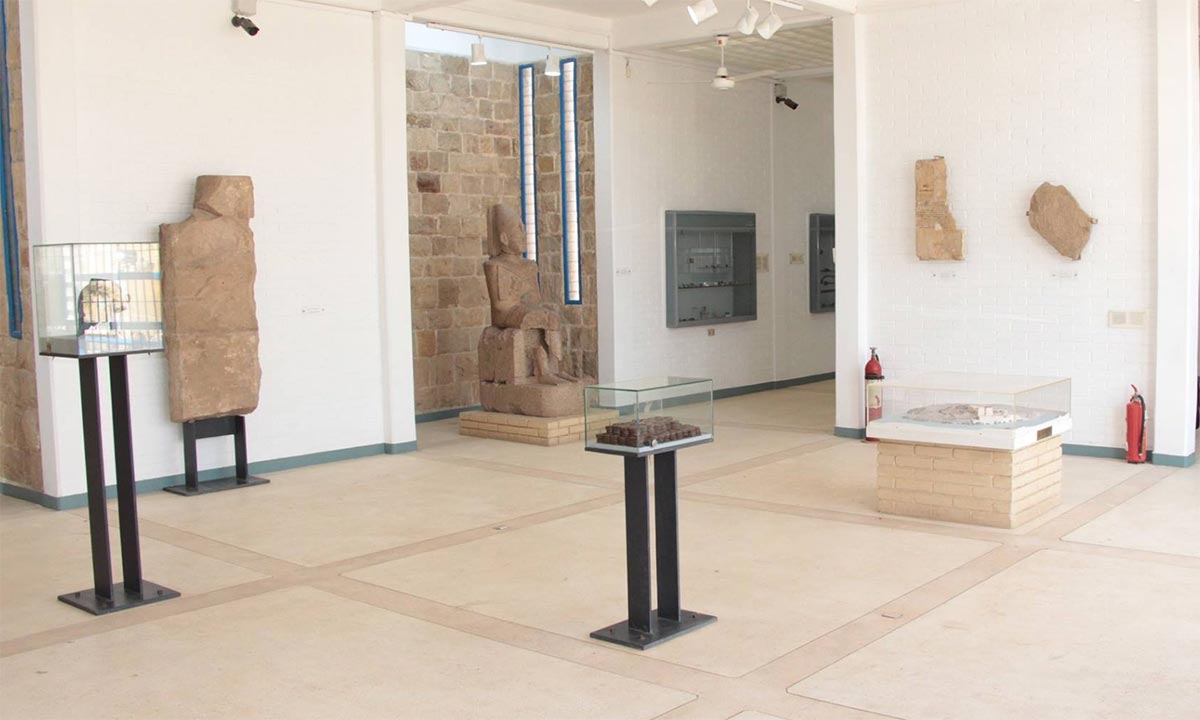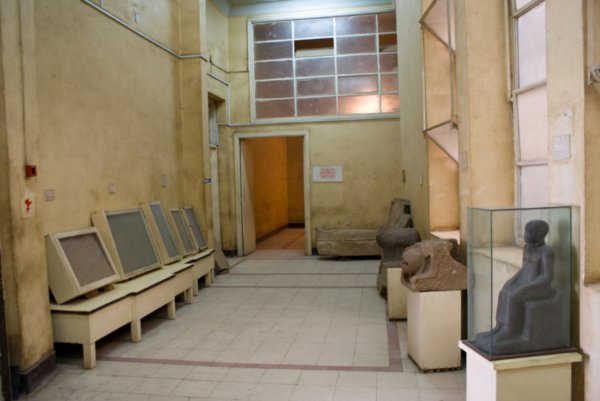Elephantine Museum
Elephantine Museum This delightful museum (7 on plan p. 41) was first opened in 1912. It is approached by a stairway leading up from the river.
It was built in 1906 as a rest house for the Irrigation and Antiquities Departments involved in building the Aswan Dam and also to store the antiquities from Nubia.
Constructed in different varieties of granite from the region, the building was enlarged in 1958 to accommodate other objects, including those from the sanctuary-of Heqaib.
The Museum plan is a central hall with two rooms on each side.
One of the most important objects in the main hall is a gilded coffin containing the mummy ofa sacred ram, decorated with figures of divinities.

It was one of many discovered by a French archaeologcal team working on Elephantine in 1908; the others were taken to museums abroad.
Also displayed in the hall are statues from the Heqaib sanctuary.
Among the finest are the statues of Sirenput II and Khema.
The former is a remarkable seated statue of the governor of Elephantine; the expression wrought from the stone is one of sadness, typical of the expressive Statuary of the late Middle Kingdom.
The statue of Khema is regarded by many art historians as among the masterpieces of non-royal statuary of the Middle Kingdom.
It is one ofthe most well-preserved statues ever found.
Only a tiny part of the highly polished gray granite is missing from the beard. It shows a young man seated with his left hand on his knee. His face is smiling, and his wig is carved in parallel lines with pointed ends that reach to muscular and’squared shoulders.
Also on display are four coffins and the mummies of a priest and priestess of Philae, which were discovered on the island of Heisa.
V Two additional monuments on ‘Elephantine are of interest: a ‘minor step pyramid’ and a monumental stairway.

The pyramid (8 on plan p.41) is situated northwest of Heqaib’s sanctuary.
It has no tomb chamber, nor is it built in a cemetery.
It is of solid masonry and is one of seven similar monuments so far discovered at various sites in Egypt.
These structures are thought to predate the famous Step Pyramid of Saqqara, and might have been built in royal estates, in which case such a structure would be both a statement of royal power and a display of its association with the sun-cult.
The stairway lies northwest of the landing stage, and its monumental proportions are worth noting.
It would appear to have been the main approach to the temple of Khnum in ancient times and was probably used in ceremonies associated with that temple.
The slope of the individual steps is noteworthy, possibly so constructed to allow priests in procession to glide impressively up and down the stairway.


